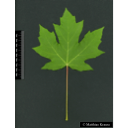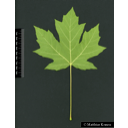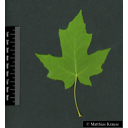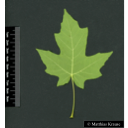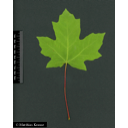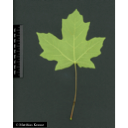Useful information about the taxon (species, subspecies, variety...)
Acer macrophyllum Pursh 1813
Sapindaceae
(APG IV)Oregon maple, Bigleaf maple
Akzessionnummer: SP-GB-064-18408
Pflanzjahr: 2018
Taxon concept: The Plant List (2014), version 1.1
Distribution: Canada: British Columbia; United States: California, Oregon, Washington, Southeast Alaska
Acer macrophyllum Pursh - Accepted: Acer macrophyllum Pursh bei The Plant List (2014), version 1.1; Familie: Sapindaceae (APG III)
- Flowers
- monoecious, heterodichogamous plant
- Flower ecology
- insect-pollinated (entomophilous) (bees, flies, and beetles)
- Life form
- tree
- Foliage persistence
- deciduous
- Fruits
- bristly samara
- Fruit ecology
- wind-dispersed (anemochorous)
- Soil conditions
- preferentially on moist soils, often in alluvial soils
- Root type
- deep-rooted with low susceptibility to windthrow
- Succession type
- occurs often in intermediate or late seral communities
- Natural occurrence (habitat)
- mixed coniferous forests, mixed evergreen forests, e.g. Tanoak-Douglas-fir forests, California bay woodlands, floodplains, riparian forests (with black cottonwood, red alder, and/or white alder) and upland deciduous forests, moist canyons
- Comment to ecology
- is affected as an alternate host by sudden oak death disease caused by the fungal pathogen Phytophthora ramorum
- Vegetation typ and synecology (plant community)
- temperate, mixed mesophytic broad-leaved deciduous and mixed evergreen forests
- Constraints according moisture
- tolerates short periodes of flooding
- Constraints according temperature
- low frost tolerance
Erhardt, W., Götz, E., Bödeker, N. & Seybold, S. (2008): Der große Zander. Enzyklopädie der Pflanzennamen. Band 2. Arten und Sorten. Eugen Ulmer KG, Stuttgart (Hohenheim), 18. Aufl., 2103 S.;
Diese Webseite verwendet Google Maps, um Karten und Standorte von Pflanzen in den Hohenheimer Gärten anzuzeigen. Dadurch werden unter Umständen Daten an Google weitergeleitet, was mit einer Verarbeitung Ihrer personenbezogenen Daten verbunden sein kann. Die Datenschutzerklärung von Google finden Sie hier: Datenschutzerklärung von Google

